Reviews
William Worsley
USA, 1920
Credits
Review by Ian Johnston
Posted on 23 October 2007
Source Kino Video DVD (American Silent Horror Collection)
Categories 31 Days of Horror
I guess that for a lot of viewers today Lon Chaney - father of Wolf Man Lon Chaney Jr. - is a name they’re familiar with without actually having seen any of his movies. So The Penalty, the start of Chaney’s real fame in leading roles, is as good a place as any to get a taste of the Chaney magic. Billed in his day as the “Man of a Thousand Faces”, Lon Chaney used his background in vaudeville to develop an array of personal makeup effects that impressed audiences of the time, the most famous roles being Quasimodo in The Hunchback of Notre Dame (it’s claimed that the makeup effects used here, covering over one eye, left him permanently short-sighted) and Erik in The Phantom of the Opera. Of course, not all his roles required these kinds of makeup special effects, and whether makeup is involved or not, there seems to be a general theme in Chaney’s performances of physical transformation—in Tod Browning’s late-twenties’ The Unknown he’s Alonzo the Armless, a circus freak; and in his only sound film, The Unholy Three, he had a statement notarised to prove that he was responsible for five different voices in the film.
In The Penalty Chaney transforms his body into that of a double amputee (needless to say, the 1920 intertitles have no qualms about calling him a cripple). There are no elaborate makeup effects. We can see his true face here, and the hammy grimacing that Chaney could indulge in is kept pretty much under control. The evil of his character of Blizzard, king of the San Francisco criminal underworld, is generally conveyed by a slight scowl to his features, which only softens when he’s with his underlings, when he’s applying a mask of pretence to the outside world, or when he’s enraptured by the power of music. (Yes, here music calms the savage beast.)
Chaney’s tour de force in The Penalty is his use of a harness that strapped his legs behind him, thus giving the convincing physical appearance of a legless amputee. There’s no use of trick photography or doubles and hardly any use of camera angles or compositions to hide Chaney’s true limbs (compare, in contrast, the tiring lengths Peter Jackson went to trying to get us to believe in his hobbits). Instead, Chaney’s body minus his legs is deliberately on display. In a powerful physical performance his body is constantly in movement. Equipped with half-size crutches, he’s forever on the move, climbing stairs, jumping on and off chairs, hobbling across the floor. There are some bravura touches, such as the way, in his study, he hauls himself from one peg to another up the wall so that he can look through the high-placed window into the room next door; or how he clambers up and down ropes between his room and the secret basement; or even how, in one scene, he drops down a fireman’s pole to land on his stumps and then move quickly across the floor.
The story’s grotesque premise is set up in the film’s prologue, Blizzard’s defining scene from his childhood. The young boy is injured in an accident and an incompetent physician, Dr. Ferris, needlessly amputates the boy’s legs. Twenty-seven years later the boy has become Blizzard, King of San Francisco’s Barbary Coast underworld, and intent on revenge. Ferris is now a leading figure in the city, his daughter Barbara is a would-be sculptor, and his assistant Dr. Wilmot Allen is Barbara’s fiancé. Blizzard’s plan of revenge is to use Barbara as a lure - he makes sure he’s the only available candidate to act as a model for Barbara’s make-or-break sculpture of “Satan After The Fall” - in order to force Dr. Ferris to amputate Allen’s legs and then to graft them on to Blizzard’s stumps.
This is the core of what is a wider plan to take control of the city—“for my mangled limbs,” he cries, “the city shall pay me with the pleasures of a Nero and the powers of a Caesar!” Here he’s a Mabuse-like figure, moving his underlings like figures on a chessboard, laying down his spider’s web over the city. There are some striking similarities with Lang’s master criminal, but the connections with both Norbert Jacques’ novel and Lang’s film Dr Mabuse the Gambler (respectively appearing one and two years later) are doubtless coincidental. The original pulp novel of The Penalty by the now-forgotten Gouverneur Morris was published in 1913 and the figure represented by Blizzard was a common type in popular fiction of the time which then crossed over into cinema (Professor Moriarty, Dr. Fu Manchu, Fantymas, and so forth). At any rate, even before we meet Blizzard we are witness to the power he holds over the underworld when his thug Frisco Pete knifes a dance hall girl who has tried to escape him—the wide shot of the woman’s body hanging out from the dance hall balcony is a powerfully brutal one. As the film progresses, scene after scene - whether isolated acts of violence like the murder of the government agent outside Blizzard’s house or his more mysterious machinations (what are all his dance hall girls doing locked in a room making hats? where do the thousands of foreign labourers fit in?) - build up this picture of Blizzard’s absolute control of his world.
At one point Blizzard refers to his father as a “distinguished man”, a paragon no doubt of middle-class society, but one who “detested little boys with their legs chopped off. So at fifteen I hobbled out of his life.” Blizzard’s disability is the visualisation of the affront he represents at several levels to “normal” society. At the simplest level there’s the fear and horror that is generated by his physical difference. In this sense he is for Barbara’s fiancé, for example, a “monster” who “ought to be chloroformed.” Even Blizzard’s lieutenant O’Hagan reveals how he shares in this general prejudice towards Blizzard’s disability when he responds in disbelief to the details of Blizzard’s plans with “You talk as if you had legs,” as if Blizzard has through the loss of his limbs lost any right to such ambition.
Rather surprisingly Blizzard also poses a political threat to his society. He’s under investigation by the Federal Secret Service whose head, Lichtenstein, talks of Blizzard being the master of “the underground powers of the Reds,” and in fact Blizzard’s major plan involves the marshalling of “ten thousand foreign malcontents” in a concerted attack on the forces of law and order. There’s a historical background to what seems now a rather bizarre twist to the film’s story. The late nineteenth and early twentieth centuries had seen a series of anarchist attacks and assassinations (the background to novels like Dostoevsky’s The Possessed, Henry James’ The Princess Casamassima, and Joseph Conrad’s The Secret Agent), and in 1919, the year before The Penalty’s release, a series of bombings and attempted bombings took place, part of the so-called Red Scare. Still, in terms of Blizzard’s role within the film, his involvement in some kind of anarcho-communist conspiracy seems pretty bizarre.
Blizzard further threatens the bourgeois world with his assertive sexuality. (Those seeking symbolism can go to town with his ever-upright set of crutches.) The sensuality of Blizzard’s world is marked from the start in the dance hall sequence that shows what are clearly prostitutes picking up clients; there’s a sexually-charged luxuriousness to the first shot of Blizzard’s private room with its framing of entwined leaves and branches that encloses the woman waiting for him there; and the Secret Service head Lichtenstein warns his agent Rose that “a woman who enters that den risks worse than death.” It is in fact Rose herself that succumbs to Blizzard’s charms, falling in love with him, and ending the film doing his bidding in his plan to lure Barbara’s fiancé Allen to his house.
On the other hand, Barbara ultimately does not respond to him, and her involuntary mocking laughter at his overtures - where, in spite of her bohemian aspirations, her class and upbringing rise to claim her - is the moment when Blizzard’s own fortunes turn. It’s also the moment when Barbara rejects the art world she has been striving towards and returns to the bourgeois fold, as Allen comforts her with “True women need love, a home, children. He has made you forget that” and she responds immediately with “I’ll marry you, dear, whenever you wish.”
Allen has always represented the bourgeois world’s antagonism towards art - in the first scene in Barbara’s studio he bullies an admiring art critic out the door - and this is a further level at which Blizzard presents an affront to this world. He’s explicitly associated with aesthetic appreciation and performance, whether lecturing authoritatively to Barbara or playing the piano in his private room, and there’s a clear sexual link here too. Blizzard always selects one of his dance hall girls to be both his lover and the operator of the piano pedals that his legless torso cannot reach.
The Penalty is a fascinating example of Hollywood film style in 1920. It’s a film that’s almost completely devoid of close ups but it adopts a very productive use of scene intercutting that goes well beyond the sort of Griffithian race-to-the-finish that you get at the climax of Birth of a Nation or Intolerance. The intercutting tends to be more thematic or contrastive—so, for example, when Lichtenstein sits in his office and details the Blizzard case, this is intercut with shots that advance Blizzard’s side of the narrative. This intercutting of parallel scenes - Blizzard’s visit to Barbara’s studio intercut with Rose’s search of his room is another example - is the structure that pushes the story forward at a pacy beat.
But the other side of being a Hollywood film of 1920 is that The Penalty can’t carry through the lurid horror, the provocative sexuality, and the brutal violence that lies in its premise. By rights the ‘penalty’ of the title should be the price that this society has to pay for what has been done to Blizzard as a boy, but sadly an almost ludicrous moralism asserts itself in the last few minutes of the film. Blizzard is made the one to pay the penalty. It’s a denouement that we want to both laugh at and resist, and in the end it’s best simply to ignore it in order to get the most out of the film.
More 31 Days of Horror
-

Alien
1979 -
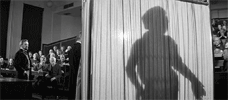
The Elephant Man
1980 -

My Bloody Valentine
1981 -

Who Can Kill a Child?
1976 -

Cannibal Holocaust
1980 -

Let Sleeping Corpses Lie
1974 -

John Carpenter’s Vampires
1998 -

Jaws 2
1978 -

A Warning to the Curious
1972 -

Wolf
1994 -

The Survivor
1981 -

Cannibal Ferox
1981 -
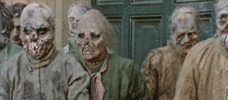
The Nights of Terror
1981 -
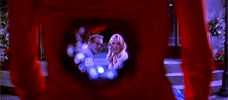
Death Becomes Her
1992 -

Alice, Sweet Alice
1976 -

Body Double
1984 -
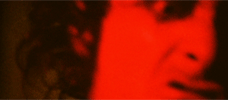
Invocation of My Demon Brother
1969 -
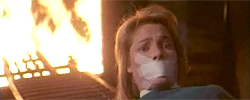
Phantasm II
1988 -

Emanuelle and the Last Cannibals
1977 -

The Wicker Man
1973 -

Maniac Cop
1988 -
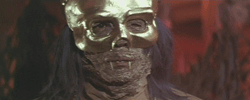
The Legend of the 7 Golden Vampires
1974 -
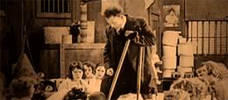
The Penalty
1920 -

Boxing Helena
1993 -

Chew on This
2005 -

Night of the Creeps
1986 -

Night of the Lepus
1972 -

Near Dark
1987 -

Army of Darkness
1992 -

The Brood
1979 -

The Lift
1983 -
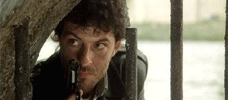
Amsterdamned
1988 -

Silent Witness
1999 -

The Shaft
2001
We don’t do comments anymore, but you may contact us here or find us on Twitter or Facebook.



